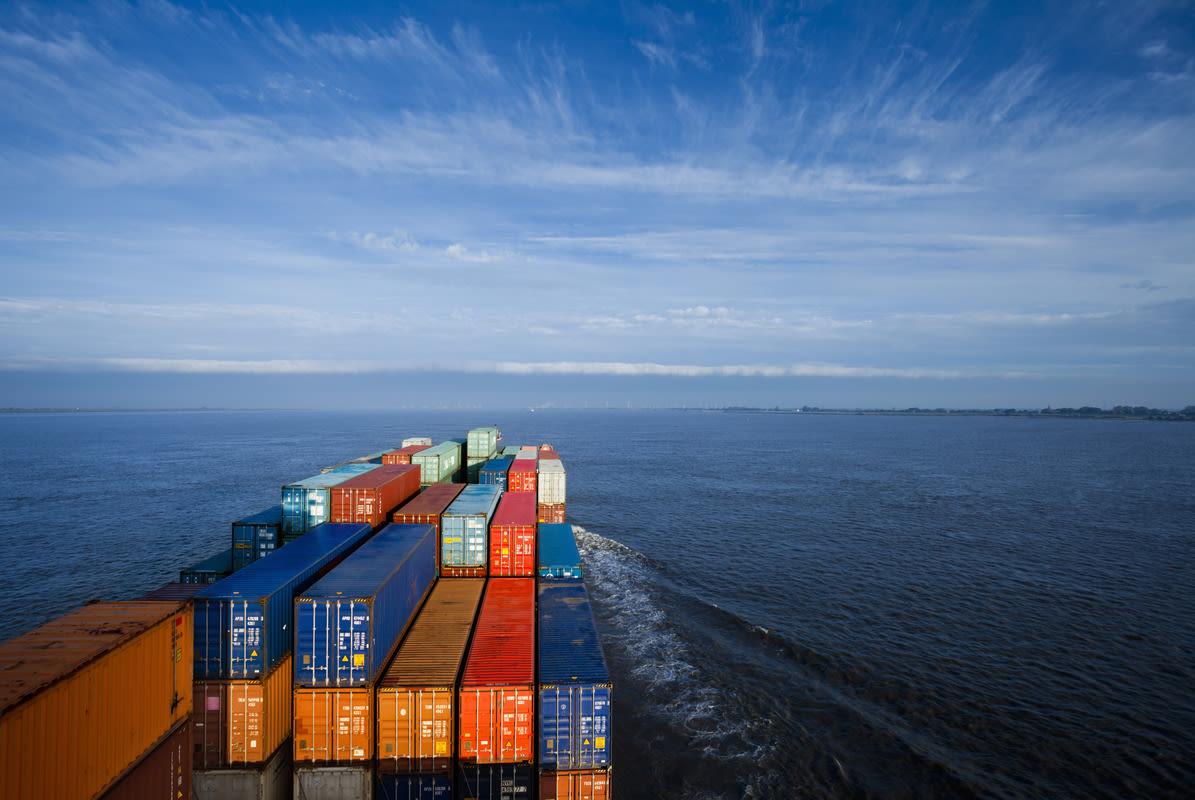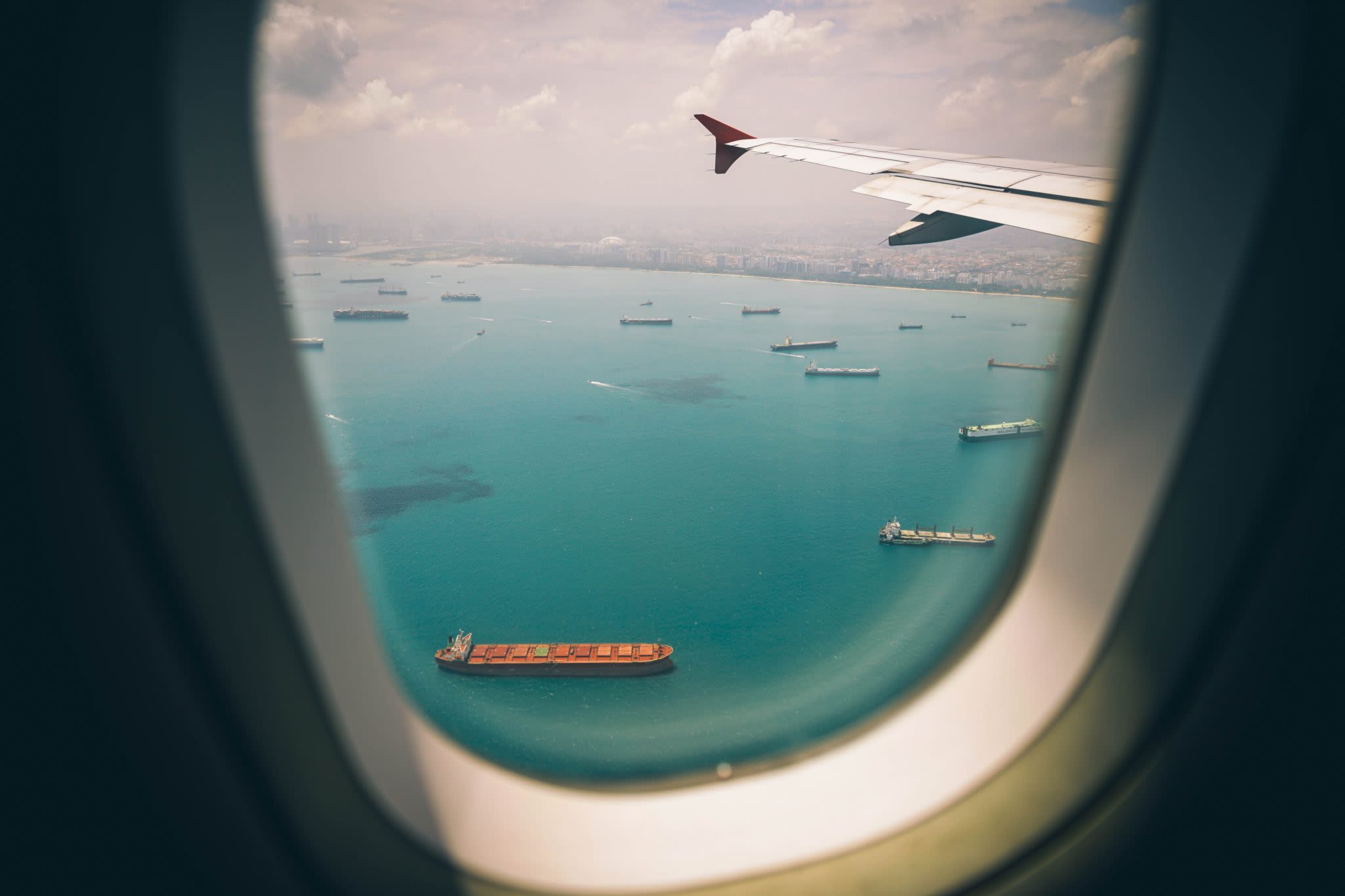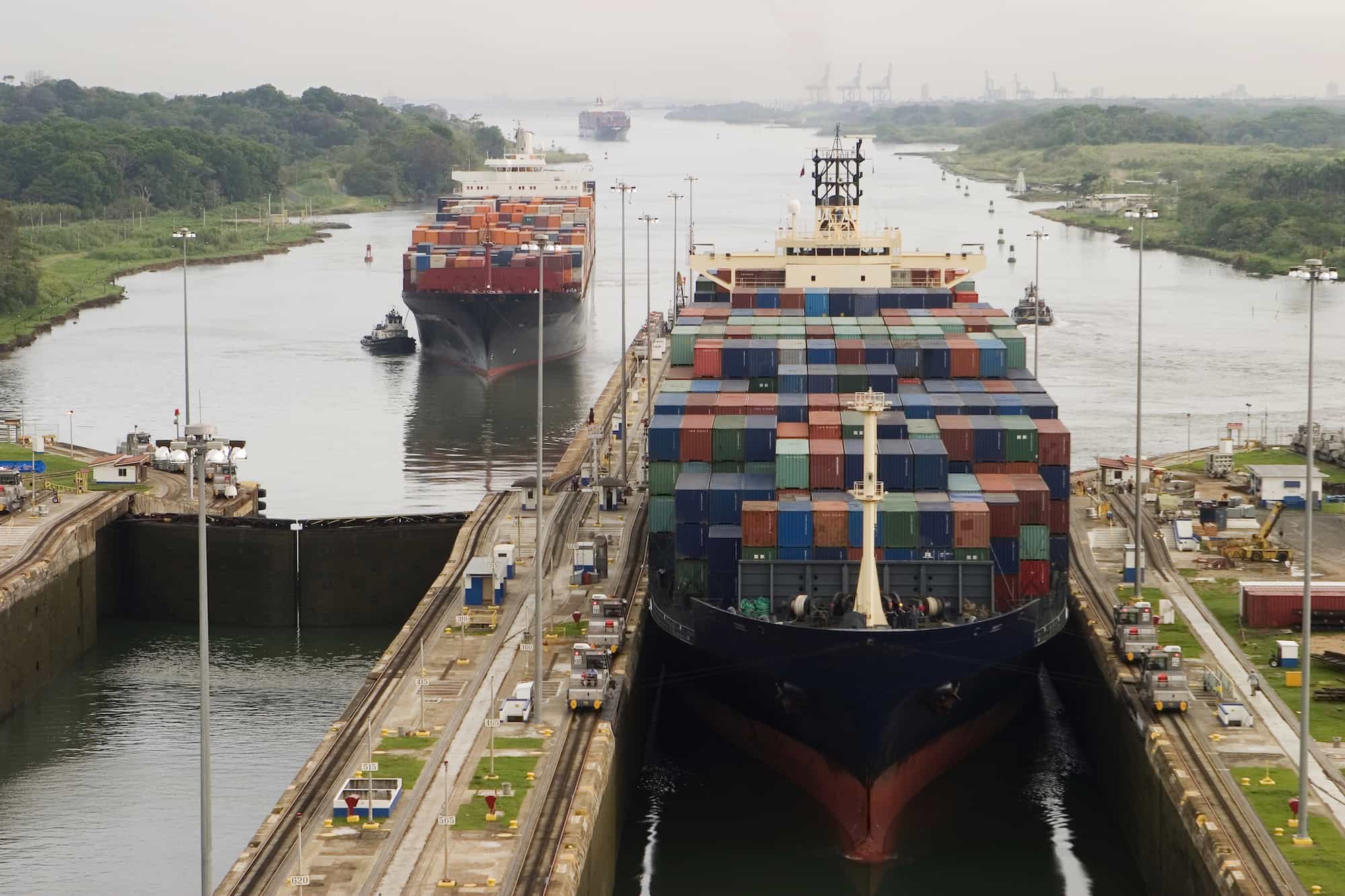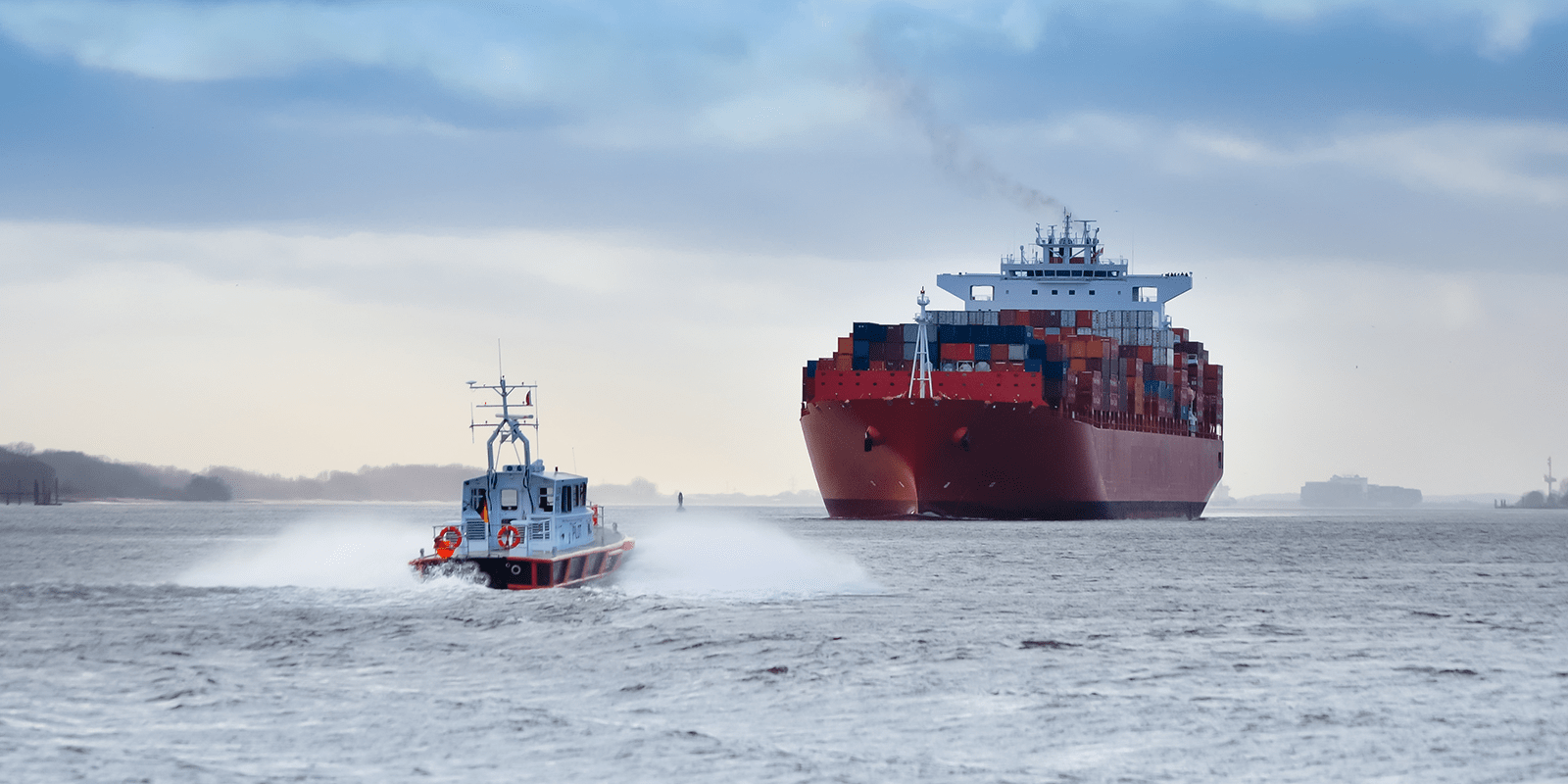
December 7, 2022
Ocean Alliances: Everything You Need to Know
Tags:

December 7, 2022
Nerijus Poskus is Vice President of Global Ocean at Flexport, where he leads long-term ocean strategy. Since 2015, he has scaled up Flexport’s global ocean carrier partnerships, trade lane coverage, and fulfillment operations. Stay current with Nerijus on the blog and LinkedIn.
As global logistics transforms to keep up with a rapidly changing world, ocean alliances have evolved.
Over the years, the shipping lines that make up each alliance have changed and their market share has shifted.
Here, we take a thorough look at the power and impact of the world’s three major ocean alliances.
What Are Ocean Alliances?
Ocean alliances are cooperative groups of carriers. The carriers commit to vessel-sharing agreements in order to help cover as much of the ocean shipping market as possible.
Within each alliance, carriers pool together their fleets of container ships. This gives each carrier access to not just their own vessels, but the vessels owned or chartered by every other carrier in the alliance. It also means carriers may move containers on one another’s behalf.
These vessel-sharing agreements are the foundation of each alliance, and they allow carriers within an alliance to extend their service offerings and geographic coverage.
The major alliances still serve most of global trade, but since 2020, with constraints on capacity, nearly every new service has been launched outside traditional alliance-related vessel-sharing—even though they’ve been launched largely by alliance members.
This recent development is most likely a temporary change, due to very high demand and the prices that follow. That is, carriers don’t need alliance partners to help them fill new vessels. And older services under the alliances are unlikely to change.
Which Carriers Are in Which Alliance?
There are three major ocean alliances: 2M, Ocean, and THE.
A few years ago, there were four alliances, but, like any other type of cooperative, objectives can shift, memberships can change, and groups can disband.
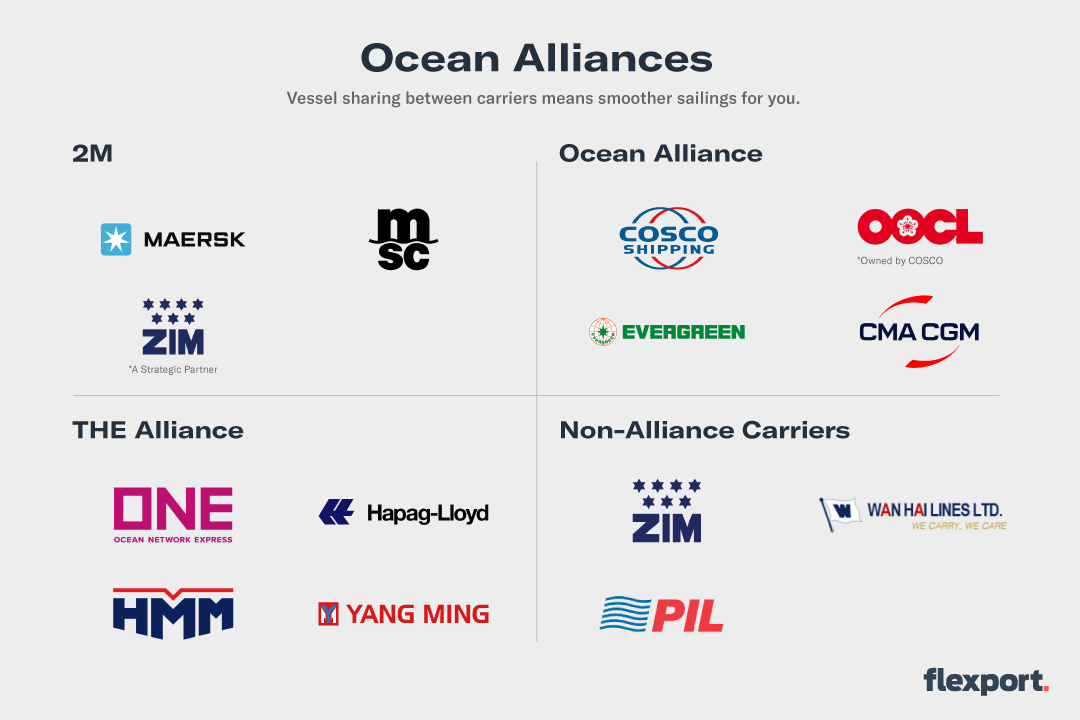
2M Alliance
The 2M Alliance is Maersk and MSC. In 2015, they agreed to a ten-year vessel-sharing arrangement on Transpacific, Transatlantic, and Asia-Europe routes. 2M has a strategic cooperation agreement with ZIM and used to have one with HMM, but in 2019, HMM moved to THE Alliance.
Additionally, MSC, Maersk, and ZIM also operate Transpacific and Transatlantic services outside of the alliance agreements.
Ocean Alliance
The Ocean Alliance is COSCO, OOCL, Evergreen and CMA. COSCO acquired OOCL in 2018 after receiving antitrust and anti-monopoly approvals from China, the US, and Europe.
CMA and COSCO also have a number of non-alliance services on the Transpacific trade.
THE Alliance
THE Alliance is Hapag-Lloyd, ONE, HMM, and YML. This alliance is recently notable for bringing greater US Gulf port service on Transatlantic routes. All member East-West services are part of the alliance.
Technology Standardization
Ocean alliances focus primarily on commercial cooperation, but several leading carriers have come together to address the challenges that arise from a lack of technological standardization.
In 2018, they formed a nonprofit organization to promulgate digitalization, standardization, and interoperability in container shipping. Not officially a product of alliances, this group represents Maersk, MSC, CMA, Hapag, and ONE.
Where Does Each Ocean Alliance Ship?
Each of the three ocean alliances ship along the world’s major trade lanes. Their market share differs based on regions.
On the Asia-North America trade lanes, the Ocean Alliance leads, taking over a third of market share. 2M comes in second with just over a quarter of the market.
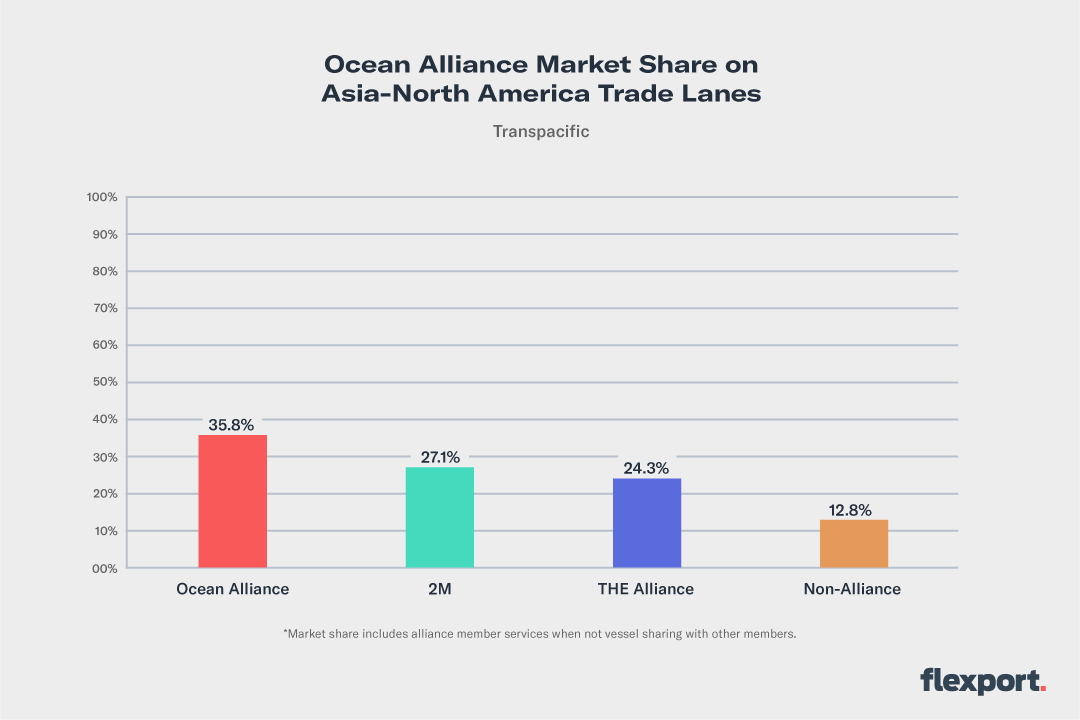
On Asia-Europe trade lanes, the Ocean Alliance comes in at a little under 40% of market share with 2M just trailing behind.
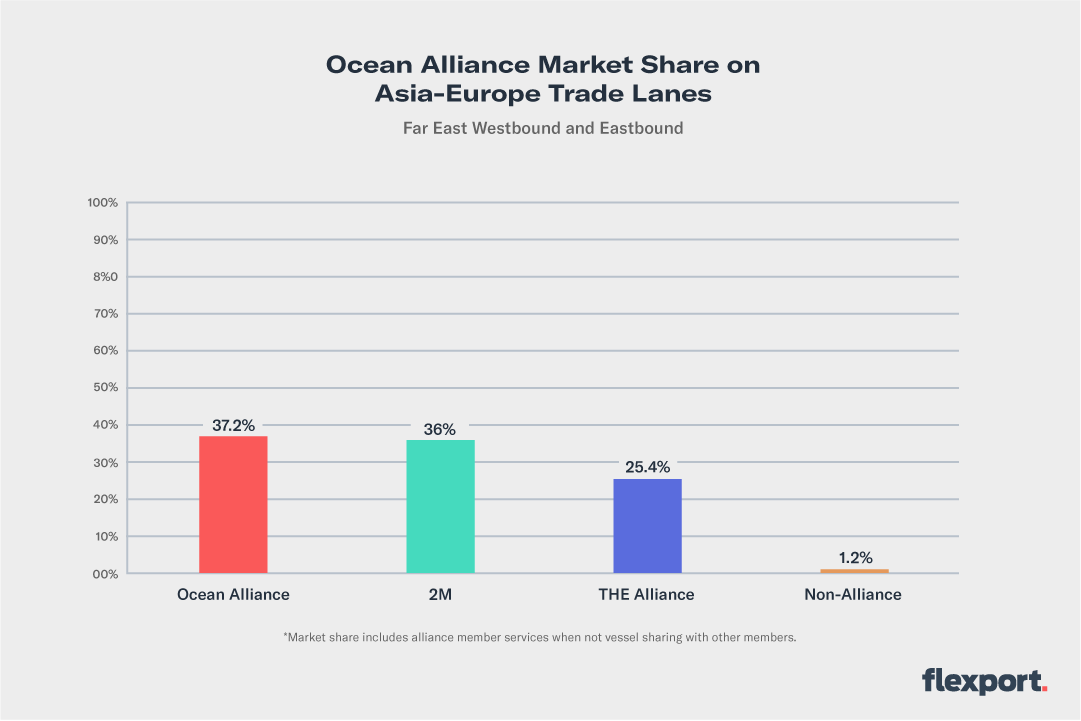
On Europe-North America trade lanes, 2M has over 40% of market share with Ocean coming in second.
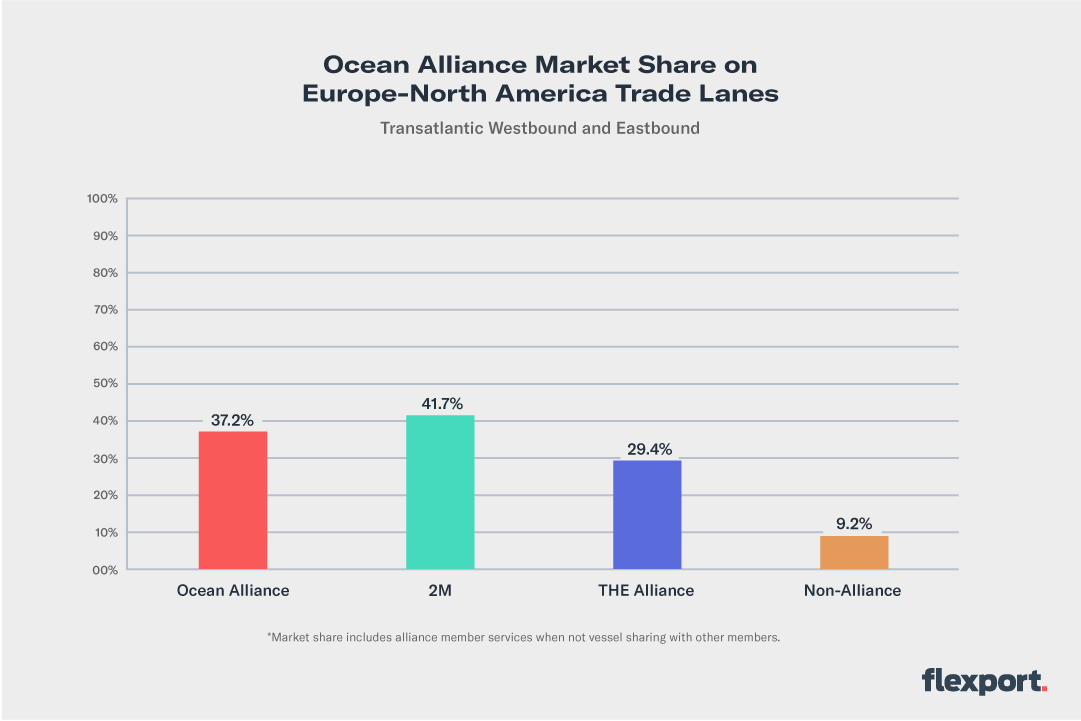
It’s worth noting here that the volume on each trade lane is vital context for the value of market share.
Booking Strategies
It inevitably comes up on any deep dive into logistics strategies: Are there ways to leverage ocean alliances for advantages to your business?
In large part, if you’re an importer or exporter, alliance operations may not matter much to you. The carriers have done the work to create advantages for the entire industry. You’ve probably already benefited from alliances, whether you know it or not.
Many companies don’t prioritize which actual vessel ends up transporting their cargo, either. The name painted on the side of a ship is less important than the terms of the agreement with the carrier. These terms remain in effect even if another member of an ocean alliance moves your cargo.
During the booking phase, though, you may want to work with your freight forwarder to see if there are any strategic choices:
Ask about ways you can position yourself for greater advantage.
Alliances could make a carrier more attractive. For instance, if two carriers are at the price you want, but one is part of an alliance that features a member with greater predictability, you might let the alliance break a tie.
See what else you can get through an alliance.
If you’re considering two carriers in the same alliance, you can guess that their performance is likely to be the same, because they’re using each other's ships. What other parts of the agreement differ, then? You might choose based on free time or other factors.
Your forwarder can explain when it’s worthwhile to explore these possibilities and when to focus on other parts of your logistics solutions.
On a day-to-day basis, shippers tend to focus more on advanced tracking capabilities, anyway. Once a booking is complete, real-time visibility and notifications are more likely to impact your supply chain than the specific vessel.
Learning about ocean alliances can help you understand more about logistics and what it takes to move goods around the world. And while it may confer specific booking advantages sometimes, there’s very little you have to do to benefit from ocean alliances. The carriers have taken care of it for you.
About the Author

December 7, 2022

